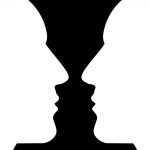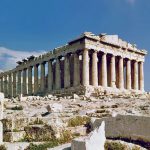 An intellectual says a simple thing in a hard way.
An intellectual says a simple thing in a hard way.
An artist says a hard thing in a simple way.
— Charles Bukowski
Many works of art are mentioned in this Art blog. Viewing them online as you read about them will enhance your experience.
Click here for the Table of Contents.
Our definition of art is unconventional but links art with what it means to be human in the broadest sense.
Art is the expression of the human aspiration not to make something beautiful but to become something beautiful. And furthermore, art is the conscious production or arrangement of sounds, colors, forms, movements, or other elements in a manner that affects our sense of beauty.
Jane Austen called this “sensibility.” And when we realize that “truth is beauty and beauty is truth” we begin to appreciate how crucial art and sensibility are to our awakening.
Similarly, philosopher Friedrich Schiller described the serious purpose of genuine art “is not merely to translate the human being into a momentary dream of freedom, but actually to make him free. It accomplishes this by awakening a power within him, by using and developing this power to remove to a distance of objectivity the sensory world, which otherwise only weighs us down as raw material and oppresses us as a blind force.” In Simple Reality terms, art connects us with our True self and reinforces our identity as the observer of the world of form and the illusion of the false self, and frees us from identifying with the mind, body and emotional reactions.
The artist is the man in any field, scientific or humanistic, who grasps the implications of his actions and of new knowledge in his own time. He is the man of integral awareness.
— Marshall McLuhan
From McLuhan’s observation it is clear that there is a relationship between art and the realization of Oneness. Art is and will play a key role in reintegrating and synthesizing our shattered paradigm into a healthy whole. For example, we can discover a new dimension of reality when we understand art and physics in terms of each other not as separate disciplines or activities. Our language certainly recognizes this, which is why when we say a person is “well-rounded” or “has depth” we commonly mean he sees the world through a different lens. By integrating the different lenses of art and science we arrive at a deeper understanding of reality, a new synthesis.
These colloquial expressions indicate that, unconsciously, we realize someone who has the ability to knit together two basically different points of view has a more profound worldview. The synthesis of art and physics will produce a heightened awareness and appreciation of the world we live in. Meister Eckhardt, the medieval mystic wrote: “‘When is a man in mere understanding?’ I answer, ‘When he sees one thing separate from another. And when is a man above mere understanding?’ That I can tell you: ‘When a man sees All in all, then a man stands beyond mere understanding.’”
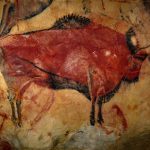 Obviously we must, as we always do in the context of Simple Reality, subordinate the intellect to the higher wisdom of our intuition if we are to mine the rich veins of consciousness hidden in the world of art. Betty Edwards, author of Drawing on the Right Side of the Brain put it this way: “By letting go of what we consciously ‘know,’ we free ourselves to see the world as it actually is—and, in turn, to depict what we have seen. We already have the skills necessary to draw. The trick is putting aside the knowledge that stands in our way.”
Obviously we must, as we always do in the context of Simple Reality, subordinate the intellect to the higher wisdom of our intuition if we are to mine the rich veins of consciousness hidden in the world of art. Betty Edwards, author of Drawing on the Right Side of the Brain put it this way: “By letting go of what we consciously ‘know,’ we free ourselves to see the world as it actually is—and, in turn, to depict what we have seen. We already have the skills necessary to draw. The trick is putting aside the knowledge that stands in our way.”
This makes sense, knowing as we do, that “what we consciously know” is an illusion. The three stages of creativity—insight, incubation and illumination—depend on the skills contained in the right hemisphere of the brain. All three skills have among them “a tolerance for ambiguity, complexity, and paradox; a reliance on nonverbal imagery and intuition; and a gestalt like capacity to see both the whole and the parts.”
“In science, winning a Nobel Prize is less about being a single-minded genius and more about being interested in many things. Relative to typical scientists, Nobel Prize winners are 22 times as likely to perform as actors, dancers or magicians; 12 times more likely to write poetry, plays or novels; seven times more likely to dabble in arts and crafts; and twice as likely to play an instrument or compose music.”
 “The delights and terrors of the visionary realm are more than amusements and curiosities. If we can access the transcendental realms, our visions and the art flowing from them can become important reminders of our highest nature. The Buddha said that a brief glimpse of the enlightened state is worth many years of scholarly work.”
“The delights and terrors of the visionary realm are more than amusements and curiosities. If we can access the transcendental realms, our visions and the art flowing from them can become important reminders of our highest nature. The Buddha said that a brief glimpse of the enlightened state is worth many years of scholarly work.”
“Certain artists become channels of the zeitgeist, the spirit of the times. When this kind of force grabs an artist, he or she is possessed. Picasso, Pollock, and Warhol each transformed art in the twentieth century. Does this mean that their work is spiritually transformative? Not necessarily, but it does mean that their works express important insights into the state of the human soul. The onset of social psychopathology and/or transformative growth is foretold in their works.”
“What great paintings and sculpture have in common with any form of great art is their ability to create a fresh order from the flux of life. The pleasure we are given from looking at them is primarily that of having our view clarified, distilled, detached from the distractions that condition our everyday way of seeing. We are able to share a perception of the world different from our own, and more penetrating.”
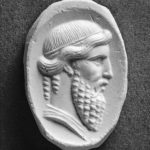 What David Piper is speaking of here, whether he knew it or not, is Simple Reality. The artists chosen for the essays in this book consciously or unconsciously have had profound insights into the nature of Simple Reality. In that way they will assist us in our own discovery of the fundamental insights that will help us distinguish intuition from intellect, feeling from emotion and finally, response from reaction.
What David Piper is speaking of here, whether he knew it or not, is Simple Reality. The artists chosen for the essays in this book consciously or unconsciously have had profound insights into the nature of Simple Reality. In that way they will assist us in our own discovery of the fundamental insights that will help us distinguish intuition from intellect, feeling from emotion and finally, response from reaction.
In this blog (and eventually in a printed book) we will encounter some of the most extraordinary men and women throughout the history of human thought and creativity. They have addressed directly or indirectly, consciously or unconsciously the answers to the Three Great Questions: Where am I?, Who am I? and Why am I here? Artists as a group are often deeply in touch with their interior experience, their inner wisdom, and hence, can make a vivid connection to the Implicate Order in the present moment. The ability of artists of all types to intuit, in a prophetic manner, the approaching tides of human history is revealed in this single line of poetry predicting revolutionary change:
From the perspective of Paradigm B (P-B) we might call some artists prophetic in seeing the future or especially sensitive in interpreting the deeper meaning of human events after they have happened. In truth, we all have this connection to the flow of a deeper reality but have repressed it. We all have the resident artist within that seeks expression. To live life and fail to express her most beautiful gifts is one of the great tragedies an individual can experience.
Unfortunately, that tragedy is the experience of the average human being and much of our energy as individuals is spent distracting ourselves from the existential fear produced by that experience. If we could awaken to the presence of that beauty within us which longs to find expression and to the beauty of the world in which we live, we would be filled with joy, peace, happiness, a deep satisfaction and compassion for all of Creation. Instead, we find ourselves strangers in a strange land.
Artists during their creative process are often in touch with the Implicate Order, with the deepest currents of human evolution. They can, in short, be the prophets of what needs to be “seen” if humanity is to attain awareness of the nature of reality itself and to avoid the self-destruction that is inevitable in the failure to wake up.
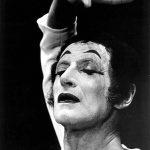 The artists themselves are often unaware of the most profound revelations of their works because those works are created in the less than profound context of the outmoded worldview that drove human behavior in the past and does so today. It is in our best interest then to revisit representative expressions of the old human narrative from the vantage point of the emerging new human narrative and harvest the profound insights that can further enrich our self-understanding. Indeed, our failure to do so puts the very future of humanity at risk.
The artists themselves are often unaware of the most profound revelations of their works because those works are created in the less than profound context of the outmoded worldview that drove human behavior in the past and does so today. It is in our best interest then to revisit representative expressions of the old human narrative from the vantage point of the emerging new human narrative and harvest the profound insights that can further enrich our self-understanding. Indeed, our failure to do so puts the very future of humanity at risk.
There may, after all be something vaster and better than dress and the table, and business and politics. It is the glorious province of Art, and of all artists worthy of the name … to nourish in the heart of man, the germ of perception of the truly great, the beautiful and simple.
— Walt Whitman
We will often use conventional critiques of the works of art we have chosen in order to provide contrast with the deeper meaning that can be felt in the work. The limitation of that approach, however, is that we are still using the conventional “higher level thinking skills” of Benjamin Boom’s taxonomy—namely analysis, synthesis and evaluation.
Mystics know that the very act of thinking itself is a false-self centered activity and of limited value in the pursuit of deeper truths. Self-realization is attained in the wordless and thoughtless present moment, not in the mind. The paradox is that thinking and knowledge itself isn’t necessary for Self-realization and yet it helps or seems to. In any case it is a lot of fun and nothing so characterizes the NOW of Simple Reality as joy itself.
The artist is not a person endowed with free will, who seeks his own ends, but one who allows art to realize its purposes through him. As a human being, he may have moods, and a will, and personal aims, but as an artist, his is “man” in a higher sense: He is “collective man,” a vehicle and molder of the unconscious psychic life of mankind.
— C. G. Jung
Psychiatrist Silvano Arieti, brings insights gleaned from his clinical practice to bear on the creative process, especially in the arts. “From a social point of view this ordinary creativity is extremely important. It gives a feeling of satisfaction and may eliminate a sense of frustration, thus providing one with a basic positive attitude about oneself and the work of one’s life.”
 Psychotherapist Erich Neuman reaches even deeper into the human psyche to affirm the importance of art. “Recoiling from the discontents of the present, the yearning of the artist reaches back to that primordial image in the unconscious which is best fitted to compensate the insufficiency and one-sidedness of the spirit of the age. The artist seizes this image, and in the work of raising it from deepest unconsciousness and bringing it nearest to consciousness, he transforms its shape, until it can be accepted by his contemporaries according to their capacities.”
Psychotherapist Erich Neuman reaches even deeper into the human psyche to affirm the importance of art. “Recoiling from the discontents of the present, the yearning of the artist reaches back to that primordial image in the unconscious which is best fitted to compensate the insufficiency and one-sidedness of the spirit of the age. The artist seizes this image, and in the work of raising it from deepest unconsciousness and bringing it nearest to consciousness, he transforms its shape, until it can be accepted by his contemporaries according to their capacities.”
Escaping the lash of the overseer (the fear-driven intellect which enables the false self) requires breathing, relaxing, responding and opening a space for the inner wisdom, the right brain, to create the freedom from suffering found in the present moment. Betty Edwards says as much in talking about the three stages of creativity: insight, incubation and illumination. “In each of these stages, the creative work occurs largely at an unconscious level—and often after the left hemisphere’s conscious, rational search for a solution has been exhausted.”
The insights that artists have in that vivid experience that accompanies the creative process are insights we can all choose to have. We would have that experience more often if it was our conscious intention, if it was a part of our overall goal in life. We all need a “big picture” plan, a map that we refer to as we make our choices throughout life.
William Faulkner realized this. “Faulkner once told The Paris Review that it was after writing his first novel, ‘Soldiers’ Pay,’ about a wounded man’s return home to Georgia after fighting in World War I, that he realized ‘the whole output or sum of an artist’s work had to have a design.’” We are all artists-in-the-making but most of us are lost in the world, with the guidance we need locked up inside. Fear is the padlock, compassion is the key. Our Simple Reality Encyclopedia, the ABC’s of Simple Reality supports the “design” that Faulkner speaks of.
“Through a large-scale, random-assignment study of school tours to the museum [Crystal Bridges Museum of American Art in Bentonville, Arkansas], we were able to determine that strong causal relationships do in fact exist between arts education and a range of desirable outcomes. Students who, by lottery, were selected to visit the museum on a field trip demonstrated stronger critical thinking skills, displayed higher levels of social tolerance, exhibited greater historical empathy and developed a taste for art museums and cultural institutions.”
These outcomes would indeed happen in P-A (Paradigm A and Paradigm B) with exposure to beauty but this study seems a bit too good to be true. In P-B, such outcomes won’t matter because in the long run, the false self will override any collective benefit of such a program. For the individual, however, truth and beauty are life-transforming no matter what the context. Epiphanies occur in art museums. Ask the students enrolled in your local art schools. They won’t be hard to find.
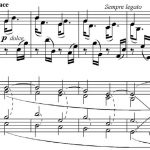 “Competent craftsmen of any time can be counted upon to master the basic media, the necessary techniques, the accepted conventions of their era. Only the true artist knows how to depart from the rules meaningfully and how to break them brilliantly. Conventions are a body of habits, but a significant work is a stroke of genius. Conventions are perspiration; art inspiration. Conventions are predictable; greatness is unpredictable. Conventions are the heritage of tradition; invention and innovation are the mark of progress.” Conventional art is the expression of an individual influenced by the narrative of his culture. Groundbreaking art is inspired by the artist’s connection to the Implicate Order, the source of all innovation.
“Competent craftsmen of any time can be counted upon to master the basic media, the necessary techniques, the accepted conventions of their era. Only the true artist knows how to depart from the rules meaningfully and how to break them brilliantly. Conventions are a body of habits, but a significant work is a stroke of genius. Conventions are perspiration; art inspiration. Conventions are predictable; greatness is unpredictable. Conventions are the heritage of tradition; invention and innovation are the mark of progress.” Conventional art is the expression of an individual influenced by the narrative of his culture. Groundbreaking art is inspired by the artist’s connection to the Implicate Order, the source of all innovation.
“All great art allows us this: a glimpse across the limits of our self. These occurrences aren’t merely amusing or disorienting or interesting experiments in ‘virtual reality.’ They are moments of genuine expansion. They are at the heart of our humanity. Our future depends on them. We couldn’t have gotten here without them.”
Marsha Sinetar discovered the profound relationship between art and the process of awakening. “All art shares common elements. The first is this: every artist’s process requires that he or she discover metaphysical themes. These are overarching, inspirational interior aims from which external life takes shape. These inner images or mystic ambitions are a must. We can’t stay our life’s course without these intimate friends. Like breath itself, they sustain us, giving strength to make a lifelong effort on behalf of our most lofty goals.” Simple Reality, of course, provides such a companion.
We will save our world. But, when it is saved, I’m confident that the door will have been kicked open by things that bring us together—the arts.
— Norman Lear
 The experience of truth and beauty can often deliver us into the “feeling” experience of the NOW, therefore art can support our process of transcendence. Art, the expression of beauty and truth, will help us to find our own the inner wisdom and strengthen our ability to become Self-reliant.
The experience of truth and beauty can often deliver us into the “feeling” experience of the NOW, therefore art can support our process of transcendence. Art, the expression of beauty and truth, will help us to find our own the inner wisdom and strengthen our ability to become Self-reliant.
The art essays on this blog are arranged by art form (i.e. architecture, dance, poetry, theater, etc.) and attribution is made for all quotes in the printed book. We suggest viewing the works of art online online as you read about them to enhance your experience.
______________________________________________________
All essays from Art and Simple Reality, Volumes I and II are posted on this blog.
Also available in print and e-book on Amazon here.
Art and Simple Reality – Table of Contents
- Introduction
- Chapter 1 – Simple Reality and the Birth of Western Art
- Chapter 2 – Architecture
- Chapter 3 – Dance
- Chapter 4 – Essays
- Chapter 5 – Film
- Chapter 6 – Graphic Arts (including comics)
- Chapter 7 – Humor
- Chapter 8 – Illusion
- Chapter 9 – Journalism
- Chapter 10 – Music
- Chapter 11 – Painting
- Chapter 12 – Performance Art
- Chapter 13 – Photography
- Chapter 14 – Poetry
- Chapter 15 – Prose
- Chapter 16 – Rhetoric
- Chapter 17 – Sculpture
- Chapter 18 – Television
- Chapter 19 – Theater
- Chapter 20 – Web Media

